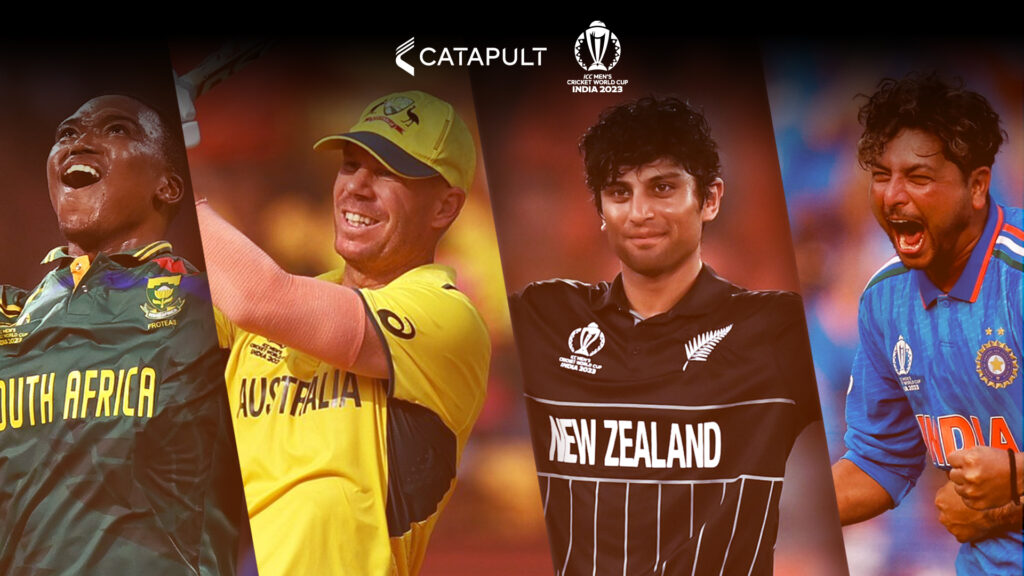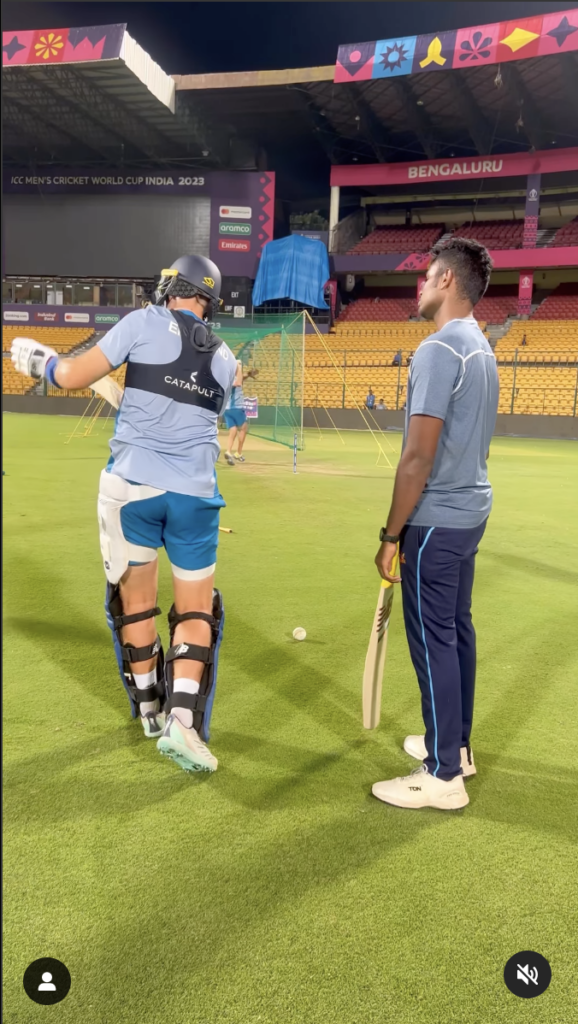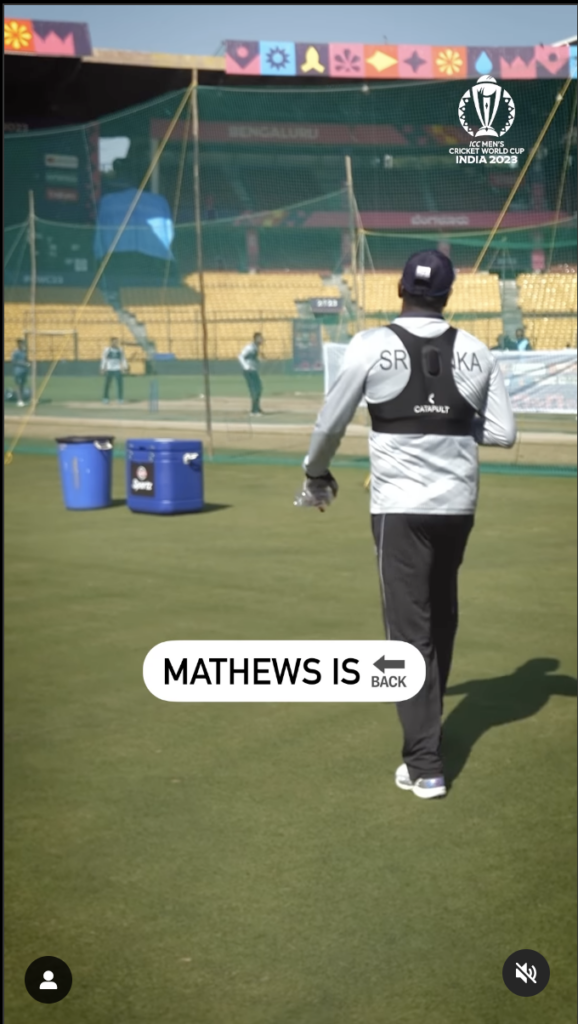How Catapult Supports Teams at the Cricket World Cup 2023
#CWC23, A true global spectacle.
→ Speak to the Catapult team about our solutions for Cricket teams.

With 10 nations competing across 48 matches, the Cricket World Cup ODI 2023 has captivated a truly global audience. From the very first innings, more than 400m have watched as teams play for US$10 million in prize money. Interestingly, the eventual winners will be taking home $4m.
The excitement of the Cricket World Cup will only continue to grow as we near the knockout stages of the competition.
Among the expected highlights, we will see if Virat Kohli – better known as King Kohli – will get his 50th ODI century, breaking the record set by Cricket Legend Sachin Tendulkar. Kohli plays for tournament hosts and favourites, India (21.9% win probability), so the atmosphere will be electric if he breaks the record.
How does Catapult support Cricket World Cup 2023 teams?
These records and feats have garnered the attention of millions and, as such, social media is ablaze with likes, comments, and shares. We too have watched closely and noticed comment sections filling up with questions about the Catapult bra/vest, which can be seen in videos, like this:
This blog addresses those questions, diving into how and why all four Cricket World Cup 2023 semi-finalists are using Catapult. Catapult has been working with 6 of 10 World Cup teams including India, Australia, New Zealand, South Africa, Sri Lanka, and England.
→ Click here to learn more about the technology Catapult provides these CWC23 teams with.
To answer the social media questions simply, the Catapult vest holds an athlete-monitoring device that collects athlete-specific data. Cricket coaches use this data to measure, monitor, and analyse individual athlete and team performances objectively.
From understanding a batter’s workload to mitigating the injury risks with your fast bowlers, Catapult empowers coaches and teams to manage and optimise their athletes’ physical performance. See England star Joe Root wearing a Catapult vest in training:

#EnglandCricket | #CWC23
Voices from the field: Q&A with Andrew Weller, Physical Performance Manager of Australia Cricket
What metrics do cricket teams measure and why?
Catapult’s athlete monitoring devices monitor a plethora of metrics. With Cricket specifically, coaches will assess Velocity, Delivery PlayerLoad, Max Rotation and Max Resultant Acceleration to quantify the physical demands being placed on your bowlers.
“In cricket, there are a couple of metrics that are important to us. High-speed running, we use a lot both in our training and match analysis because of the relationship it has with soft tissue injury,” said Weller.
“Also the bowling algorithm is something we look at to measure the intensity of bowling and has been a way that we can change the way players look at their training by getting a measure of intensity. It enables us to manage our fast bowlers’ preparedness for the various formats looking at the relationship between intensity and volume.”
How do cricket coaches use Catapult to ready for competition?
With 48 matches played in just two months, the Cricket World Cup presents teams and their players with a demanding schedule. Getting the balance between training, recovery, and workloads has been and will continue to be key in this tournament.
For example, teams will monitor the acute-to-chronic workloads of their players. This ensures that the top performers are in peak condition for every game.
Weller, explained: “Preparedness for competition in cricket is an interesting … one because we have three different formats. We’ve got multi-day, which goes over four or five days and athletes can cover up to 60km over those four days if they’re a fast bowler, down to T20 cricket, which is finished in three hours and players cover on average around 6km.
“The measure that’s probably variable between them is probably the density of high-speed running. So when looking at what particular format they’re going into, you need to ensure that … if they’re going into shorter versions of cricket they’ve had exposure to high-speed running.“
How do cricket teams use Catapult when returning an athlete to play following an injury?
Injuries can derail sports careers, and Catapult’s technology plays a crucial role. It provides actionable insights that help in fine-tuning training and performance strategies, helping teams bring their stars back to fitness.
“Return from injuries has been an area where GPS technology has been a huge advantage to us. Having a good understanding of the match demands in terms of the distance parameters that players cover in terms and their exposure to the different high-speed bands. We want to make sure the players have had exposure to the demands that are going to be met in each of those formats,” said Weller.
→ Discover more about how Catapult is revolutionising cricket with its cutting-edge technology.
Join us in applauding the success of the teams and the role of technology in elevating cricket. Here’s to an exciting conclusion to the Cricket World Cup ODI 2023!
